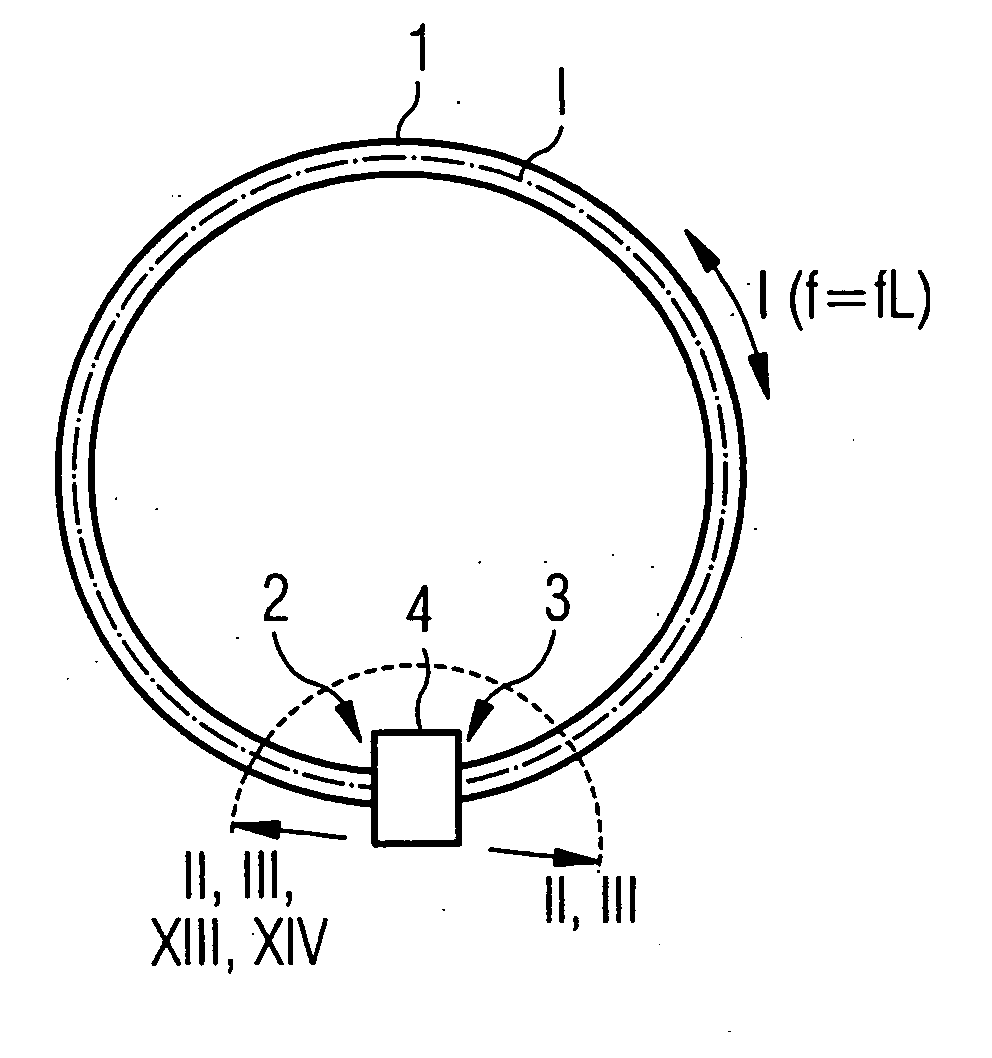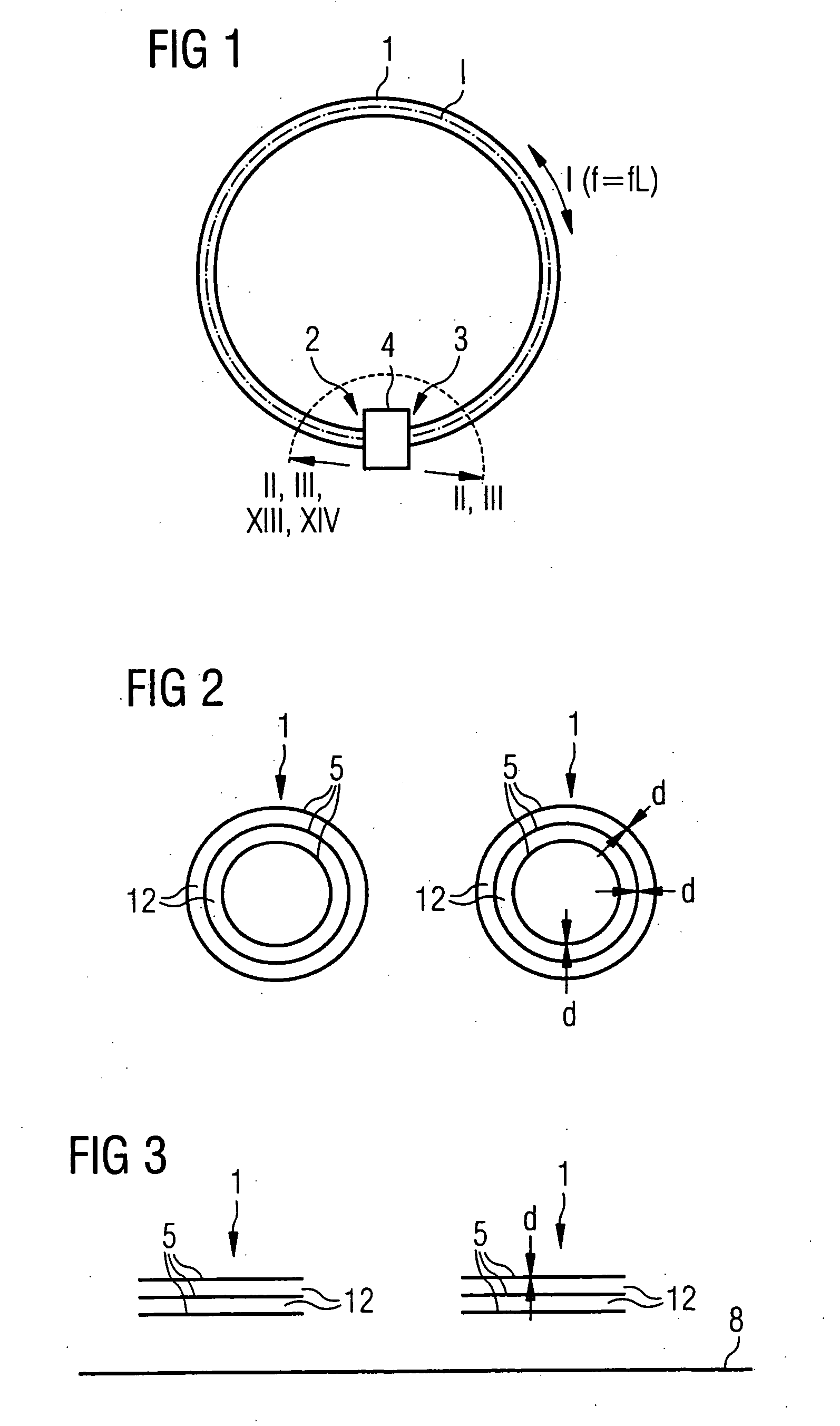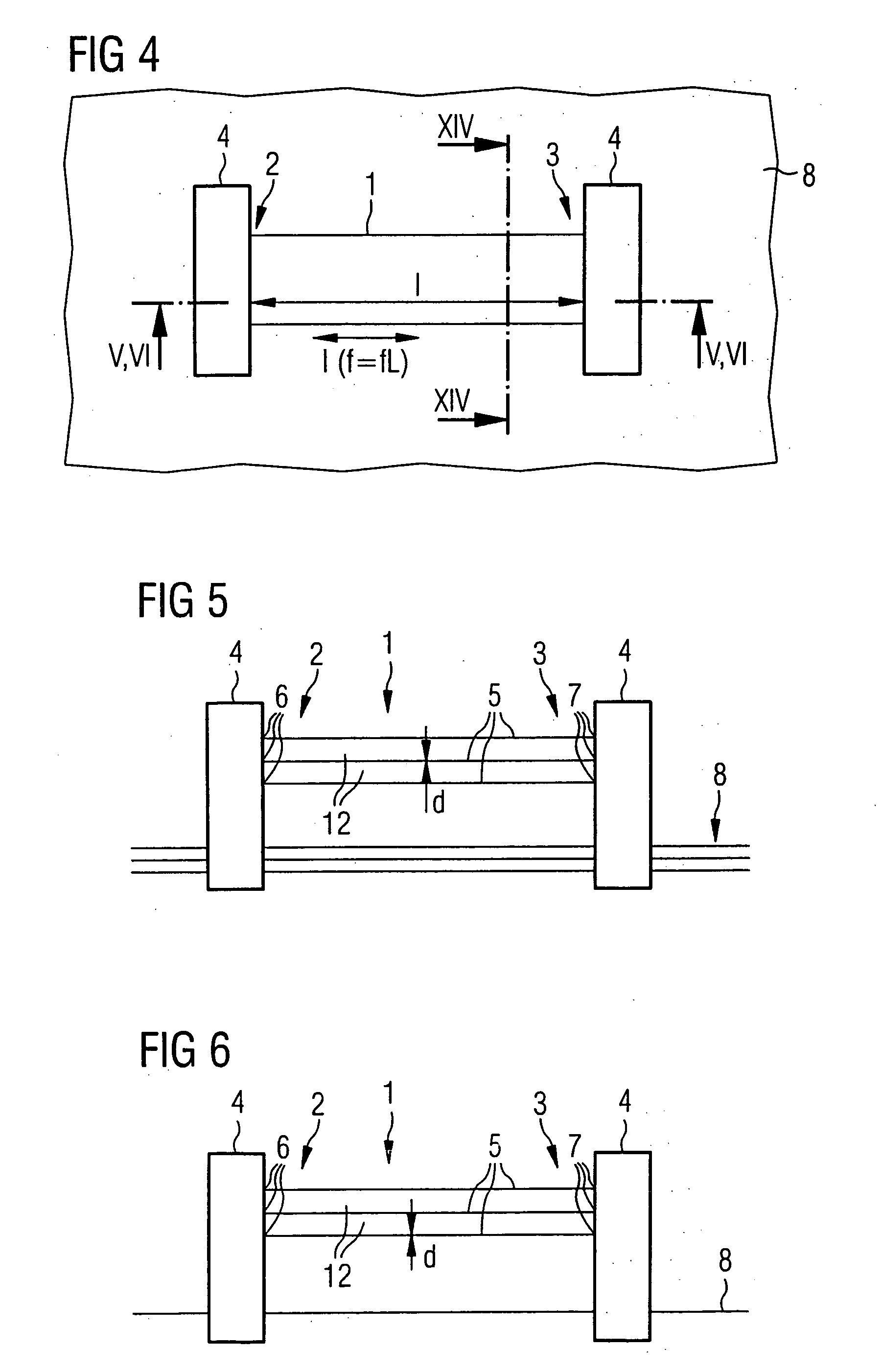Resonator for magnetic resonance applications
- Summary
- Abstract
- Description
- Claims
- Application Information
AI Technical Summary
Benefits of technology
Problems solved by technology
Method used
Image
Examples
Embodiment Construction
[0036] According to FIG. 1, a resonator for magnetic resonance applications has a conductor element 1 that extends from a first conductor end 2 to a second conductor end 3. During operation of the conductor element 1, a resonance current I oscillates with a resonance frequency f in the conductor element 1 from the first conductor end 2 to the second conductor end 3 and back.
[0037] In magnetic resonance applications the resonance frequency f corresponds with the Larmor frequency fL of a magnetic resonance system. The conductor element 1 therefore extends over a length l that is significantly smaller than half of the wavelength corresponding with the resonance frequency f. The conductor ends 2, 3 are coupled with one another via a circuit 4, whereby the conductor element 1 is tuned to the resonance frequency f by the circuit 4.
[0038] The conductor element 1 of FIG. 1 forms essentially an annular shape. It is therefore possible for the circuit 4 to directly couple the two conductor e...
PUM
 Login to View More
Login to View More Abstract
Description
Claims
Application Information
 Login to View More
Login to View More - R&D
- Intellectual Property
- Life Sciences
- Materials
- Tech Scout
- Unparalleled Data Quality
- Higher Quality Content
- 60% Fewer Hallucinations
Browse by: Latest US Patents, China's latest patents, Technical Efficacy Thesaurus, Application Domain, Technology Topic, Popular Technical Reports.
© 2025 PatSnap. All rights reserved.Legal|Privacy policy|Modern Slavery Act Transparency Statement|Sitemap|About US| Contact US: help@patsnap.com



